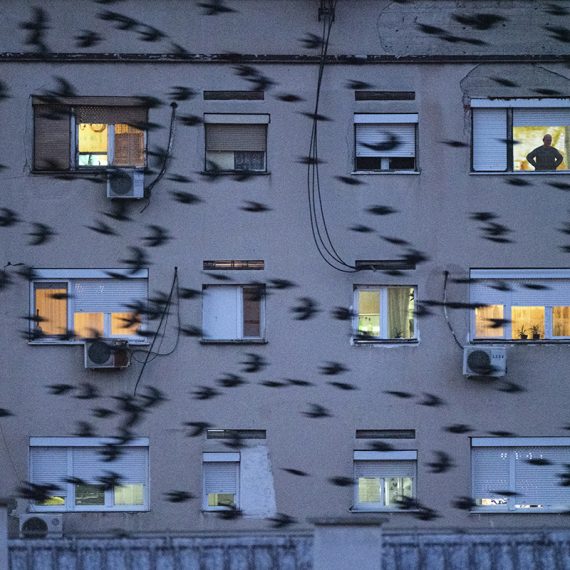The Book of Veles
It was 2016, and Donald Trump had won the election to become president of the United States of America. His election, however, had many grey areas, such as the huge disinformation campaigns and the exponential growth of fake news that accompanied the presidential campaign.
Much of this news can be traced back to Veles, a city in northern Macedonia. Jonas Bendiksen, a Magnum photographer who has always been interested in discovering what lies behind major historical events, decided to travel to this town to find out more.
By chance, Veles was also the name of an ancient shape-shifting Slavic god who himself was known for spreading chaos, mischief and lies.
The myth of Veles is taken from the epic text The Book of Veles, translated from archaic Cyrillic by two Russian scholars. Bendiksen discovered that the text is a forgery, one which has fooled scholars for decades. Veles and the town of the same name indeed herald chaos and deception.
Using these stories as a backdrop, Jonas Bendiksen created The Book of Veles: a 2021 documentary photobook that was an instant success in the photojournalism community. After the book was critically acclaimed and shown at a prestigious photo festival, Bendiksen deployed a fake social media profile to attack himself and eventually reveal that the entire book was a forgery. The book’s content was a mixture of classical reportage, 3D avatar models and AI text generation systems.
Through the Book of Veles, Bendiksen seeks to both alert us to the imminent wave of synthetic text and imagery, and show that visual disinformation can lead even trained media professionals astray. This body of work is both a provocative reckoning with Bendiksen’s own history as a classical photojournalist as well as an experiment to see where technology might lead photography in the immediate future.


